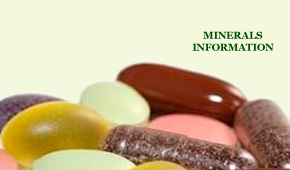ANISE
 Information
Information
Pimpinella anisum, also known as Aniseed is part of the Umbelliferae plant family.It is a native of Egypt, Greece and Crete.
General Information
Botanical Name: Pimpinella anisum
Common Name: Aniseed
Plant Family:Umbelliferae (It is related to the Carrot family)
History:
The name comes from dipinella meaning twice pinnate (relating to its leaf structure). Anise was well known by the Greeks being mentioned by both Dioscorides and Pliny and was cultivated in Tuscany during Roman times, and spread to Central Europe in the Middle Ages.
In biblical times, Anise was used with other spices for the paying of taxes: Ye pay tithe of Mint, Anise and Cummin - Mathew 23, The Bible.
Plant Constituents of Anise
Contains:
-a fragrant, syrupy, volatile oil (2.5-3.5%)
-anethol
-choline
-fixed oil
-mucilage
-sugar
Action:
-antiseptic [an agent for inhibiting the growth of microorganism on living tissue or destroying pathogenic or putrefactive bacteria]
-antispasmodic [an agent which relieves or eases muscular spasms, cramps or convulsions]
-aromatic [a substance having an agreeable odor and stimulating qualities]
-carminative [an agent for easing griping pains, colic and expelling gas from the intestines]
-digestive [aids the digestive system]
-expectorant [an agent that promotes the discharge of mucous and secretions from the respiratory passages]
-pectoral [remedy for pulmonary or other lung and chest diseases]
-stimulant [an agent that excites or quickens the functional activity of the tissues giving more energy]
-stomachic [an agent that strengthens, stimulates or tones the stomach]
-tonic [an agent that tones, strengthens and invigorates organs or the entire organism giving a feeling of well-being]
Usage of Anise
Medicinal Part used: The fruit or seeds
Anise
-seed head hung on your bedpost is said to restore lost youth
-was used as a bath additive prior to ritual mixed with Bay Leaves
-was used in potpourri around the house to ward off evil and the evil eye
-was used in the sleeping pillow at night to chase away nightmares
Anise is commonly used for:
Bacterial Conditions
-eradicates intestinal bacteria
Brain and Nervous System Conditions
-epilepsy
Seeds:
-insomnia (taken with warm milk)
Female Conditions
-induces menstruation
-promotes milk in nursing mothers
Gastrointestinal Conditions
-digestive infections
-colic, especially in infants
-eases colic-type pains
-flatulence (gas)
-halitosis (bad breath)
-improves appetite
-indigestion
-nausea
-promotes digestion
-purifies intestines, with Caraway and Fennel
-soothes digestion
Anise Oil:
-expels flatulence
-is used as a stomach tonic
-relieves cramps and spasms
Inflammatory Conditions
-infantile catarrh
Respiratory Tract Conditions
-bronchitis
-chest infections
-loosens tight phlegm
-persistent hard, dry coughs
-reduces congestion and irritation in the lungs
-spasmodic asthma
Other
-alleviates cramps
Externally it can be used as a salve for:
-lice
-scabies
and a wash for:
-the eyes (diluted)
Other Uses:
-on buns and rolls (seeds)
-to flavor liquor
-to condition horses (seeds)
Precautions
Drug Interactions:
Do not use Anise without first talking to your practitioner or healthcare provider if you taking any of the following medications:
-None known
[AD]











